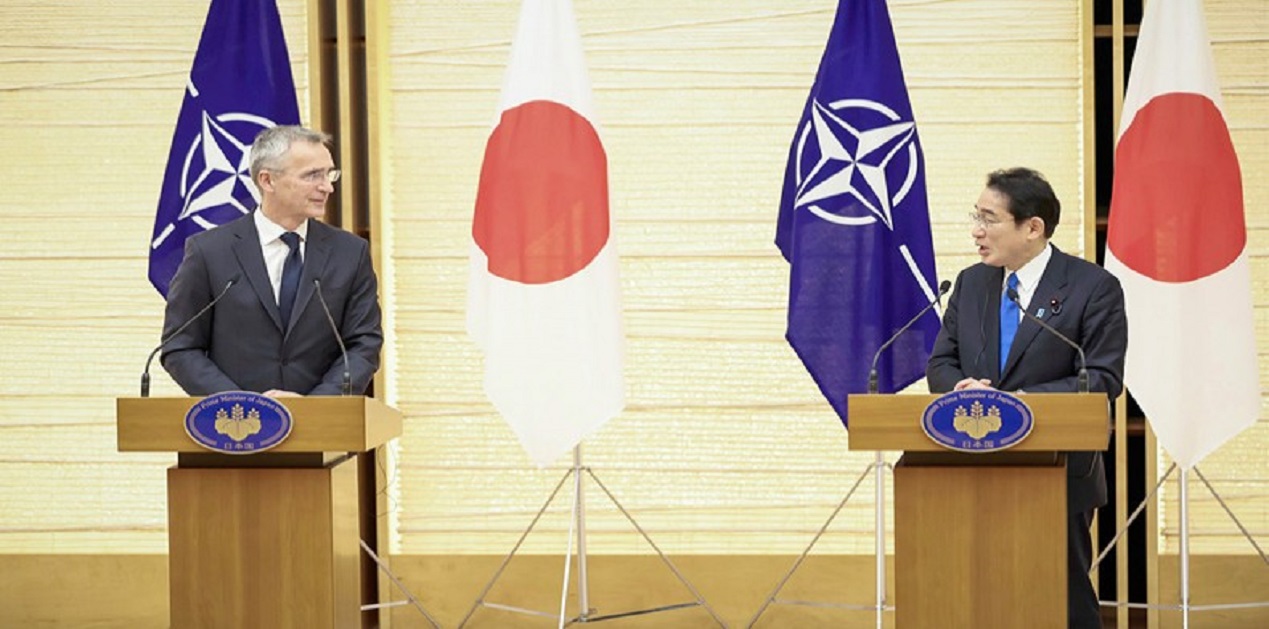When the Quad idea was floated for the first time by the former Japanese Prime Minister Shinzo Abe in his address to the Indian Parliament in August 2007, popular for its title “Confluence of the two Seas” there was no unanimity among the proposed members in the grouping to be called Quadrilateral Security Initiative or Quad. Australia’s response was lukewarm. Within India too, there were division of views among opinion makers and analysts. Critics of the idea thought that the initiative would unnecessarily anger China and thus prematurely conceived. The idea went into hibernation after the architect Abe went out of power until it was resurrected upon his return to the second term in 2012 and gained acceptability as China started flexing its muscle. Quad was thus revived and in quick time assumed greater currency. The four members – the US, Australia, Japan and India – have since held summit meetings on a regular basis to discuss security issues in the Indo-Pacific. There should be no denying the fact that China’s aggressive posture pushed the Quad members to come together to a platform where they can discuss the China challenge.
Then when the US, Australia and UK (two already Quad members) announced a trilateral security pact on 15 September 2021 called AUKUS for the Indo-Pacific region, there was a bit of confusion in India and Japan as both are Quad members were not informed in advance. Under the pact, the US and UK will assist Australia in acquiring nuclear-powered submarines. The pact also included cooperation on advanced cyber mechanisms, artificial intelligence and autonomy, quantum technologies, undersea capabilities, hypersonic and counter-hypersonic, electronic warfare, innovation and information sharing. The pact aims to build mutual military capability, separating it from the Five Eyes intelligence-sharing alliance that also includes New Zealand and Canada. Though India and Japan as Quad members were not consulted when AUKUS was formed, there was no heartburning as it was clarified that both groupings compliments each other with the same objectives.
Against this background and talks of NATO’s outreach to the Asia-Pacific, questions were raised in certain quarters if these organisations were ploys to facilitate NATO’s entry into the Indo-Pacific. While the author was giving a talk on a related topic organised by a think tank in Kolkata on 23 May 2023, a young scholar asked a question during Q and A if Quad and AUKUS are to be seen as Asian NATO. In reply when I said, my short answer is NO and asked if interested I can give a longish explanation. The spirited boy backed out and was satisfied with my short answer. The truism is that both QUAD and AUKUS are not backdoor entry of NATO into the Indo-Pacific and any assumption on this as truth would be fallacious.
Rajat Ganguly, a Professor at an Australian University, answers this tricky question of whether AUKUS is a back door entry of NATO into the Indo-Pacific in a long article. One needs to understand before one reads Rajat’s explanations that the Australian government signed the deal with the intention to buy up to 8 nuclear attack submarines (SSNs), which may cost Australian tax payers upwards of $368 billion. Rajat writes that the first three subs (most likely refurbished Virginia class SSNs) are expected to be delivered around the mid-to late-2030s. Thereafter, Australia would have the option to procure two more subs from the US. The remaining subs are to be the new AUKUS SSNs to be built in Adelaide with British technology. Australia has also reportedly agreed to buy 220 Tomahawk cruise missiles after the US State Department approved the sale.
The bigger question is why was Australia keen on the deal? One needs to keep in mind that the deal was done before the Ukraine crisis erupted. What were the compelling reasons for the Antony Albanese government to take a decision to procure eight nuclear attack submarines at such a huge cost to the tax payer? The issue was never debated and was not even an election issue by either the Labor or the Liberal Party. This left the academics, policymakers, politicians and general public surprised.
The decision on the submarine deal needs to be contextualised in the cracks that had surfaced in Australia’s relations with China when the Australia demanded investigation by the WHO about the origin of the Covid-19 pandemic in China. Soon both sides took resort to economic retaliation by way of tariff hike, quota restrictions and other punitive measures. The once robust economic ties had taken a hit even before the Ukraine crisis started. It is therefore not difficult to imagine that it was the China factor and its aggressive stances on a host of issues that pushed the Albanese government to take countermeasures and was behind the submarine deal. Though a possible physical invasion by China of the Australian mainland is never realistic and thus unthinkable, China can always disrupt its economic relations and Australia’s exports by controlling the maritime routes. China’s possible cyber attack could be another worry for Albanese government. Indeed, freedom of navigation in the high seas and keeping away PLA Navy (PLAN), particularly in the South China Sea, is extremely important for Australia and other maritime nations.
It is estimated that 80 percent of China’s exports pass through Malacca Strait. In other words, China’s economic destiny is heavily tied to the Strait’s stability. Therefore disrupting the commercial sea lanes of traffic would hurt China more than the raw materials exporting nations. China’s economic interests are closely tied to keeping commercial sea traffic moving freely through the Indian Ocean Region (IOR), the Strait of Malacca, and the South China Sea. The Strait of Malacca, across the Indian Ocean, links the South China Sea to the Persian Gulf, the Red Sea, Suez Canal, and the Mediterranean Sea. This east-west sea line of communication happens to be China’s “maritime lifeline.” China’s main worry is the Malacca ‘choke point’ dilemma as it fears that if tensions heighten with the US, the US Navy acting on its own or with strategic partners such as India and Australia could easily blockade the Strait of Malacca. Such a situation shall cause severe economic damage to China’s interests.
The strategic location of the Strait of Malacca is such that control of this maritime water by any single power would not be in the interests of global trade as decisions can be dictated. The Strait of Malacca is an 805-kilometer stretch of water that falls between the Malay Peninsula on the northeast and the Indonesian island of Sumatra on the southwest. It is surrounded by Malaysia, Singapore, and India (Andaman and Nicobar Islands). Of these, Malaysia can be termed neutral from China’s point of view. But Singapore is a US ally, and India is a US partner through QUAD.
Because of such vulnerability of China, and with the objective to overcome this dilemma, it has chosen countermeasures and made concerted efforts such as militarisation of the islands converting many to forward military bases and claims over the South China Sea so that its ambitious BRI projects are not hindered. Besides Chinese fears of the essential chokepoint being weaponised by the US and its Pacific partners and imposing blockade, the resultant disruption of trade and energy resources and raw material flows could be devastating to Chinese economy incurring heavy cost. Such a situation would be also a big deterrence for China to use force against Taiwan, one of its “core” interests. The decision by Australia to acquire nuclear submarines shall surely act as deterrence for China in resorting to any misadventure.
Since India’s pre-eminence in the Indian Ocean remains undisputed, India can also strengthen its own position by upgrading its military posture in the Indian Ocean region and upgrade its base infrastructure and military equipment in Andaman and Nicobar Islands. Partnering with Australia in strengthening base in Australia’s northern coast and Cocos (Keeling) Islands and deployment of naval assets of both would be a better strategy to keep China in check.
For China, there are no easy alternatives to Malacca. The nearby Sunda Strait adjoining Indonesia is difficult to navigate due to a strong tidal current and a minimum depth of only 20 meters in parts of its north-eastern end. The Lombok/Makassar Strait in the region is a longer route. Using this would increase shipping costs. That makes the use of the Malacca Strait route as the most commercially viable for all maritime nations.
If this is the case, did Australia join AUKUS as a backdoor entry to the NATO and has fallen into a trap as NATO is making an eastern push? NATO seems to be on an expansion breeze. It has already welcomed Finland and now likely to welcome Sweden soon. Ukraine’s possible entry has been kept on hold for the time being for reasons already explained. Japanese PM Kishida’s attending the NATO summit in Lithuania is being differently interpreted. If this is the case, can Australia be kept out of reckoning?
How can India, a Quad member, be left out from this evolving security matrix? Its long-standing policy is to see that the war in Ukraine must end soon. Prime Minister Modi was vocal when he said this is not an era of war but living in peace and harmony is. That position is unlikely to change. India has not condemned or imposed any sanctions. India is unlikely to allow its historical ties with Russia to be derailed with this single event. Russia has been the main source of weapon imports, though India does not want to put all eggs in one basket and has begun diversifying weapon imports from the US and France. A major deal with France was announced during Modi’s recent visit to that country. Modi has spoken with both Putin and Zelensky urging them to end violence as the war is going on with heavy human costs.
The issues are complicated. Even within NATO, there are differences. France has objections of NATO opening a liaison office in Tokyo. Turkey and Hungary still have some grievances against Sweden but have given conditional consent. India’s strategy to maintain neutrality while remaining in talking terms with all with a view to secure peace in the world deserves admiration. This is in tune with India’s civilizational ethos.
(The paper is the author’s individual scholastic articulation. The author certifies that the article/paper is original in content, unpublished and it has not been submitted for publication/web upload elsewhere, and that the facts and figures quoted are duly referenced, as needed, and are believed to be correct). (The paper does not necessarily represent the organisational stance... More >>
Image Source: https://www.newagebd.com/files/records/news/202305/201379_131.jpg











Post new comment